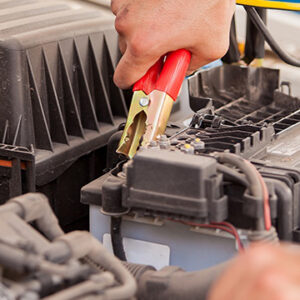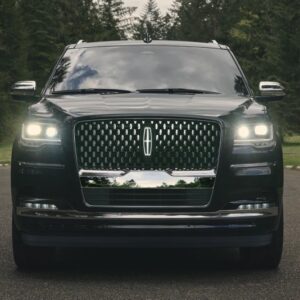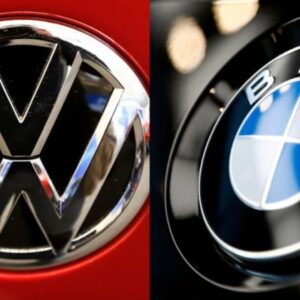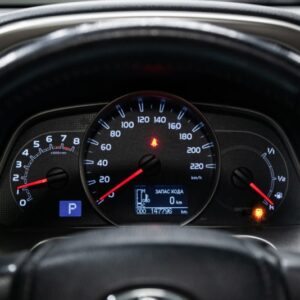Does cruise control hurt your car? A common dispute amongst car owners involves the use of cruise control. Once a convenient feature only used in luxury cars, it is now used in almost every vehicle on the market. However, there has been much controversy surrounding the cruise control feature and whether or not it is bad for your car.
What Is Cruise Control in Cars?
Cruise control is a mechanism found in most cars, usually located on or near the steering wheel, and allows drivers to set their speed even with their foot off the gas pedal. With the press of a button, drivers can sit back and lock in their speed without tiring or worrying about maintaining their speed.

Cruise control is most often used on highways or long stretches where traffic is smooth. It is deactivated as soon as the driver hits the brake and will not be reactivated until the button or switch is pressed again.
How Does Cruise Control Work?
While there were a few attempts at making something like cruise control, the modern version we have today was invented in 1948 by a blind inventor named Ralph Teetor. The feature was initially called a “speedostat” or “tempomat.”
The “speedostat” was a mechanism that could activate and control the vehicle’s speed by controlling the throttle valve. It is connected to the valve by a cable used as an alternative to the gas pedal when activated. Internal sensors measure the throttle position allowing the cruise control mechanism to determine when to speed up and slow down.
Does Cruise Control Hurt Your Car?
As cruise control takes over a car’s throttle, it is not surprising if you are questioning whether cruise control is bad for your car or not. The truth is, using cruise control will not damage your car engine. In fact, when used appropriately, cruise control has many benefits:
Reduces heavy acceleration
Putting your foot to the floor and hitting high speeds is not good for your car. Quickly speeding up from stationary or low speeds can put a strain on the transmission and engine and lead to premature wear and tear of the systems.
When cruise control is activated, your vehicle moves at one set speed and there is no sudden acceleration straining the engine.
Keeps drivers within the speed limit
When you set the cruise control to 70mph on the highway, you know you are not going to accidentally start speeding. If you are on a fast-moving road, it can be tempting to hit the gas pedal but cruise control can keep you within the speed limit and out of trouble with the cops.
Reduces leg/foot fatigue
Driving for long periods of time can be tiring for our legs and feet. When you are using cruise control, you don’t need to keep your foot on the gas pedal.
However, while you should definitely not move your feet out of the footwell and away from the pedals, you can relieve some of the strain by moving your feet a bit more freely than usual.
Better fuel economy
When you are using cruise control, your car is set at one speed and only uses the power necessary to stay at that specific speed.
When you press the gas pedal, fuel is used and accelerating will result in more fuel consumption, you are also more likely to fluctuate between speeds. With cruise control set, your car will be using the exact amount of fuel it needs, and not a drop more.
Using cruise control is not bad for your car and you do not need to worry about your engine or transmission. The cruise control system has been designed to enhance your driving experience, but not at the cost of your car’s engine or other parts.
Cruise control can be dangerous when used in certain conditions, but we will talk more about that later in this article.
When to Use Cruise Control
Even though the majority of modern cars come with cruise control as standard, not all drivers know when they should and shouldn’t be using this feature.
The truth is, when used at the wrong time, cruise control can be very dangerous. To help keep you safe out on the road, here is a list of all the times it is safe for drivers to use cruise control:
On dry roads
If the roads are dry and the traffic is flowing at a steady speed, it should be fine for you to activate cruise control. When you don’t have to worry about keeping a steady speed, long car journeys can be more enjoyable and less tiring on your feet and legs.
On the highway/interstate/open road
Sometimes when you are driving in fast-moving traffic, it can be tempting to put your foot down and break the speed limit. To stick to the legal limit, you can set the cruise control, sit back, and not worry about the cops pulling you over and giving you a ticket.
Cruise control keeps drivers at a set steady speed and as long as the surrounding traffic is moving just as fast, there is no need to hit any of the pedals.
In the right conditions, cruise control is a handy tool to have and is particularly useful for truck drivers and long-distance commuters.
When Not to Use Cruise Control
During rain, snow, or other inclement weather, you must maintain control of your vehicle at all times. Cruise control should never be used on wet or slick roads.

Cruise control should never be used in city traffic, where it is difficult to maintain one speed. Doing so could result in an accident, as frequent slowing and breaking are necessary to stay safe.
Additionally, cruise control should generally not be used on twisting, winding roads—especially those you are not familiar with. Accuracy and control are far more critical when navigating these roads than speed.
Cruise Control Pros and Cons
Like many optional features on today’s vehicles, cruise control comes with pros and cons. Operating a motor vehicle is a big responsibility, so it’s essential to have all the information to ensure you drive responsibly.
Advantages of Cruise Control
First, by setting the car at one consistent speed, drivers are much less likely to incur traffic violations for speeding.
Secondly, cruise control reduces driver fatigue. Without the need to keep their feet on the pedals, drivers can easily change positions safely and be more comfortable while driving. Drivers with arthritis or foot pain find relaxing their feet on the car’s floor much less strenuous.
Finally, by regulating the vehicle’s speed, cruise control helps regulate the amount of fuel used for your trip. Without the constant speeding up and slowing down, the car will use only the exact amount of gas needed and no more.
Disadvantages of Cruise Control
By not having your attention on your speed, it can be easy for drivers to lose focus and become distracted, causing an accident. It can also be easier to fall asleep at the wheel.
Additionally, having cruise control while driving winding roads or during inclement weather, where you may need to slow down frequently, is dangerous.
Finally, a driver with their feet on the floor can lose spatial awareness and may accidentally hit the gas rather than the brakes when necessary, causing an accident.
How Cruise Control Affects Your Motor and Transmission – Will It Cause Damage?
Cruise control essentially performs the same function as your gas pedal – telling the throttle to send more or less air intake (and thereby, fuel) to the engine, to make the vehicle accelerate or decelerate. The key difference is that cruise control largely eliminates the minor (or major) speed fluctuations that inevitably occur when you’re controlling the gas manually.
These fluctuations can lead to a lot of undue wear and tear on the car’s components – bouts of rapid acceleration consume gas and make the engine work harder; frequent braking wears down the brake pads and drums; falling in and out of gear over and over can strain the transmission.
As such, cruise control is arguably better for your motor and transmission because it helps keep everything operating smoothly and steadily. However, there are a few caveats to keep in mind.
After-Market Cruise Control
Built-in cruise control systems are designed to integrate seamlessly with your vehicle’s engine, transmission, and electrical system. An after-market cruise control system, particularly if it’s incorrectly installed or not OEM (original equipment manufacturer), may not perform properly with your vehicle, potentially resulting in premature wear and tear to certain components.
Manual Transmission
Similarly, on vehicles with manual transmissions, cruise control is generally less effective and can potentially cause damage to the transmission when changing gears. Pressing the clutch should disengage the cruise control, but if this mechanism is faulty (more common with after-market systems), it can lead to slips and grinding gears.
This is particularly an issue when navigating hills and other areas that necessitate frequent gear changes.
Can You Use Cruise Control For Long Distances?
You can absolutely use cruise control for long distances and keep it engaged for extended periods – that’s ultimately what it’s designed for. Long stretches of highway are where it works best and comes most in handy. However, there are some possible dangers of prolonged cruise control use.

Cruise control is meant to reduce fatigue on long drives, but it can end up having the opposite effect on some drivers. Many people find that not having to keep a close watch on the speedometer and apply continuous pressure on the gas pedal allows their minds to wander or lulls them into a state of relaxation and even drowsiness.
It is therefore important to understand how to prepare for a long drive by yourself. You should be comfortable on a long drive, but not so comfortable as to sacrifice your attentiveness and vigilance behind the wheel.
Similarly, some studies have shown that reaction times tend to be a little slower when using cruise control for prolonged periods. With the right foot relaxed and away from the pedals, it can take slightly longer to hit the brakes in an emergency – the last thing you want when every second counts.
FAQs
Is cruise control safe in the rain?
Cruise control should not be used during inclement weather, where drivers should be in full control of their vehicle at all times.
Is it illegal to use cruise control in residential areas?
There are currently no laws regarding the use of cruise control. However, most vehicles’ cruise control will not work unless you are going over 25mph.
Is cruise control bad for your brakes?
Cruise control uses your accelerator like you do when you step on the gas. When deactivated, it is up to the driver to slow the car further. It does not engage or harm the brakes in any way.
Is it bad to use cruise control on hills?
When driving uphill, cruise control will still try to maintain the set speed regardless of the incline. While this is not bad for your car, it can burn more gas than it would if you were slowly accelerating.
Above is information about Does cruise control hurt your car? that we have compiled. Hopefully, through the above content, you have a more detailed understanding of Cruise control pros and cons. Thank you for reading our post.









